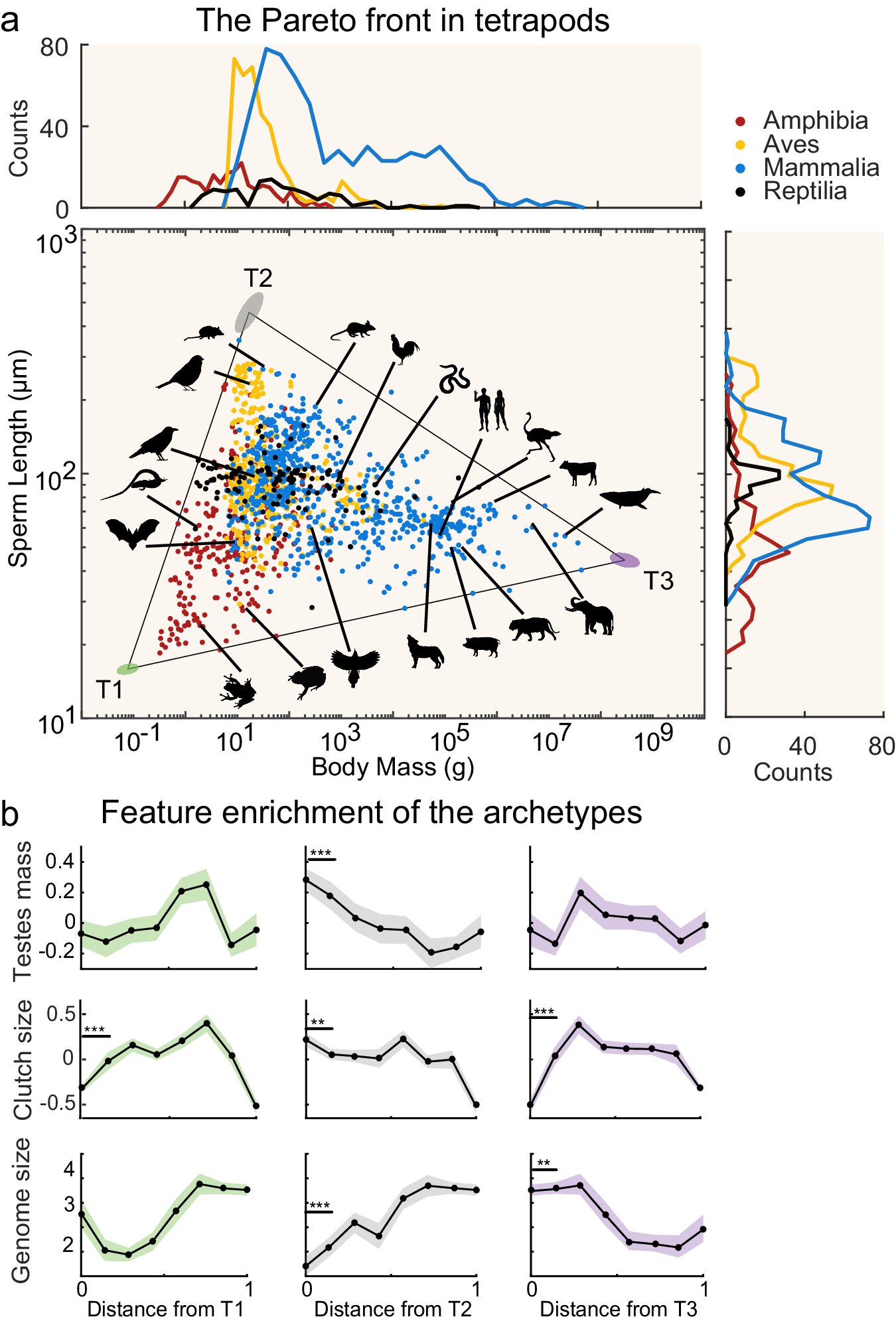An international research team has developed an innovative method to study the evolution of sperm length in tetrapods. Using the Pareto principle, scientists from Germany and Italy analyzed the complex relationships between sperm length, body mass, sperm competition, and clutch size to capture evolutionary trade-offs among these traits.
The results of the study, titled “Tetrapod sperm length evolution in relation to body mass is shaped by multiple trade-offs,” were published in the journal Nature Communications. The corresponding author, Dr. Silvia Cattelan, is an evolutionary biologist working as a Postdoc in the Valenzano Research Group at the Leibniz Institute on Aging–Fritz Lipmann Institute in Jena.
“The evolution of reproductive traits is often difficult to study because reproductive traits are influenced by so many different factors,” explains Dr. Cattelan. “The concept of Pareto Optimality and the statistical method we used in this study helped us unravel this complexity. We were able to show that across species sperm length is associated with body mass in a non-linear way.
“Additionally, we identified the key factors that have influenced the evolution of sperm length in tetrapods. With these findings, we hope to inspire future research, such as exploring whether the evolution of large genomes in species with high sperm competition could be constrained.”
Sperm length varies hugely across species, ranging from less than 10 μm (in some wasps) to nearly 105 μm (in some fruit flies). Despite intensive research aimed at understanding the evolution of the large variation in sperm length, many questions remain open.
To fill this gap the authors applied a novel statistical framework based on Pareto Optimality. Pareto Optimality predicts that in the presence of evolutionary trade-offs, phenotypes tend to be distributed along low-dimensional polygons, such as segments, triangles etc., called Pareto fronts.
The evolutionary processes that drive the distribution of the phenotypes on the Pareto fronts can be inferred by analyzing the traits that enrich (i.e., are maximal or minimal) the vertices of the polygons.
First, the authors started by analyzing the relationship between sperm length and body mass in 1,388 species of tetrapods (i.e., mammals, birds, reptiles and frogs). Sperm length and body size of tetrapods occupy a triangular shape, which indicates that trade-offs constrained the evolution of sperm length in relation to body mass.
Second, by analyzing the potential factors driving the evolution of sperm length, they found that long sperm evolved in species with high sperm competition and with large clutch size, but that are characterized by small genome size.
Moreover, the triangular Pareto front persists in endothermic animals, internal fertilizers, mammals, and birds, indicating similar evolutionary strategies within tetrapods. The Pareto front is also robust against phylogenetic dependencies until 65 mya, which corresponds to the species radiation followed by the evolutionary processes that drive the distribution of the phenotypes on the Pareto fronts that can be inferred by analyzing the traits that enrich (i.e., are maximal or minimal) the vertices of the polygons the dinosaur extinction.
Overall, the findings of the study provide new insights into the evolutionary mechanisms driving variation in sperm length across species and highlight the power of the Pareto framework in detecting complex, non-linear associations between traits. Importantly, this method can be applied to different type of data, including gene expression data, proteins, neural systems and morphological traits.
More information:
Loren Koçillari et al, Tetrapod sperm length evolution in relation to body mass is shaped by multiple trade-offs, Nature Communications (2024). DOI: 10.1038/s41467-024-50391-0
Provided by
Leibniz Institute on Aging – Fritz Lipmann Institute (FLI)
Citation:
How evolutionary trade-offs shape sperm length in tetrapods (2024, October 28)
retrieved 28 October 2024
from FBS
This document is subject to copyright. Apart from any fair dealing for the purpose of private study or research, no
part may be reproduced without the written permission. The content is provided for information purposes only.
